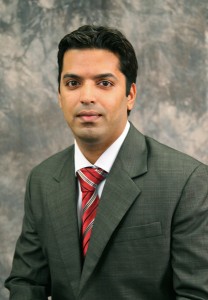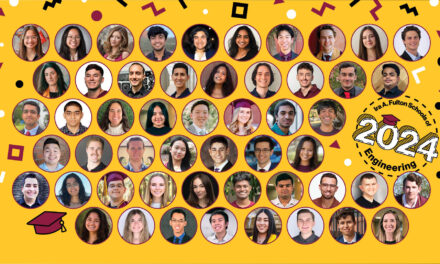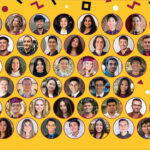
Strengthening metal alloys would provide energy, environment conservation benefit

Kiran Solanki, assistant professor of engineering, is working on ways to make more resilient light-weight metal alloys. Such improved materials could help reduce the energy consumption necessary to power motor vehicles.
Posted: January 10, 2012
Fundamental discoveries in optimizing the performance of light-weight metal alloys have earned recognition for Kiran Solanki, a new ASU engineering faculty member.
The results of the work promise to help engineers and scientists better understand how to enhance the performance of new light-weight materials used in a wide variety of technological applications. The light-weight materials can be particularly effective in helping to improve the energy efficiency of motor vehicles and reduce their polluting emissions.
Solanki recently joined ASU as an assistant professor in the School for Engineering of Matter, Transport and Energy, one of the university’s Ira A. Fulton Schools of Engineering. He combines expertise in solid mechanics and material science to study the microstructural properties of materials and predict their behavior under various conditions.
The Minerals, Metals & Materials Society (TMS) has awarded Solanki and two co-authors its 2011 Light Metals Magnesium Best Paper award for the report detailing their research on light-weight metal alloys.
He has been aided by Mehul Bhatia, who is pursuing a doctoral degree in mechanical engineering at ASU, and Amitava Moitra, a former postdoctoral fellow at Mississippi State University who worked there with Solanki. Bhatia and Moitra are the winning paper’s other co-authors.
Titled “Effect of Substituted Aluminum in Magnesium Tension Twin,” the paper addresses a major challenge in development of new alloys. It involves finding ideal concentrations of new solutes that can be added to base metals to optimize their performance. Solutes are substances that dissolve into another substance in solutions.
The solute additions are critical to enhance the deformation and failure modes of materials, which occurs both when alloys are manufactured and when they are subjected to complex loading such as in a crash impact, Solanki explains.
Understanding how the metal alloy will respond in such circumstances provides information needed to make effective adjustments in the ratio of the solute to the base metal in a solution. That ratio is important in affecting the mechanical properties of an alloy to produce an optimal performance.
In the award-winning paper, Solanki’s research team demonstrates use of a nanoscale simulation technique to reveal how an aluminum substitution in pure magnesium affects its deformation and its behavior when the material fails.
“Our research provides a fundamental understanding of the role of solutes on deformation and fracture modes of metal alloys,” Solanki says. “This will guide the science of designing structural materials with enhanced properties and performance capabilities.”
He is working with magnesium and magnesium alloys because they are particularly light-weight materials that also offer the advantage of being highly recyclable.
“With the world’s energy needs increasing, energy efficiency and conservation become more important. More effective light-weight structural materials that help reduce the energy consumption needed for transportation will contribute to meeting that goal,” Solanki says.
Prior to coming to ASU, Solanki was an associate director at the Center for Advanced Vehicular Systems at Mississippi State University, where he earned a doctorate degree in 2008.
He has published more than 50 peer-reviewed journal and conference papers and he serves on the editorial board of the Journal of Surfaces and Interfaces in Materials. His paper “Finite element analysis of plasticity-induced fatigue crack closure: an overview,” published in Engineering Fracture Mechanics, was one of the most highly cited papers from 2002-05.
Solanki won the 2008 Henry O. Fuch Award from the Society of Automotive Engineers International for outstanding achievements in fatigue and fracture mechanics.
Solanki and Bhatia will be presented their best paper award from the Minerals, Metals & Materials Society at the organization’s annual meeting in March in Orlando, Fla.



































